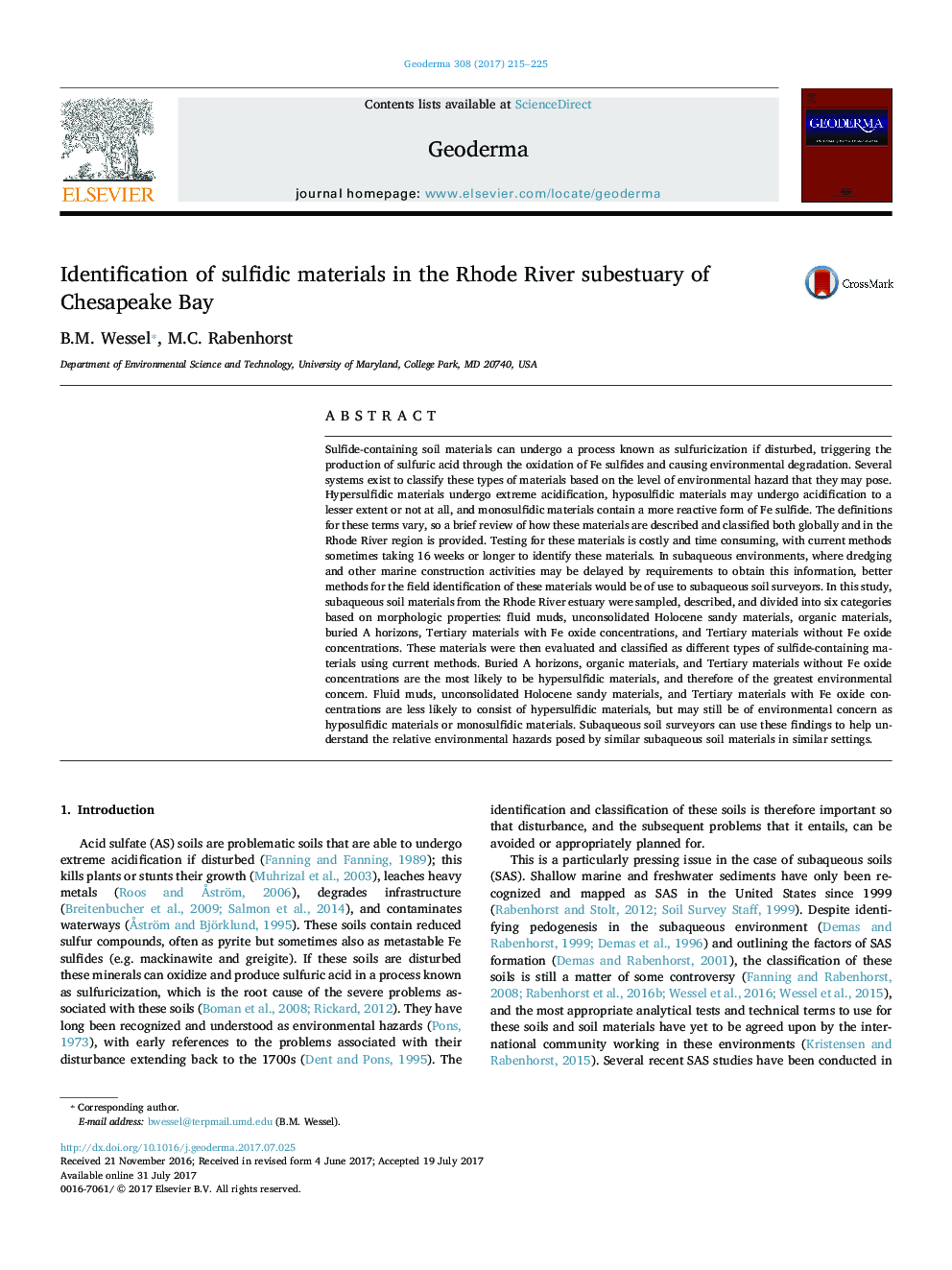| کد مقاله | کد نشریه | سال انتشار | مقاله انگلیسی | نسخه تمام متن |
|---|---|---|---|---|
| 5770565 | 1629409 | 2017 | 11 صفحه PDF | دانلود رایگان |
- The identification and classification of “sulfidic materials” are briefly reviewed.
- 6 categories of subaqueous materials are described for the Rhode River estuary.
- Buried A, organic, and some Tertiary horizons are commonly hypersulfidic.
- Monosulfidic materials are nearly ubiquitous and may extend 2Â m in depth.
- Use of field tests to identify the presence of sulfides is explained.
Sulfide-containing soil materials can undergo a process known as sulfuricization if disturbed, triggering the production of sulfuric acid through the oxidation of Fe sulfides and causing environmental degradation. Several systems exist to classify these types of materials based on the level of environmental hazard that they may pose. Hypersulfidic materials undergo extreme acidification, hyposulfidic materials may undergo acidification to a lesser extent or not at all, and monosulfidic materials contain a more reactive form of Fe sulfide. The definitions for these terms vary, so a brief review of how these materials are described and classified both globally and in the Rhode River region is provided. Testing for these materials is costly and time consuming, with current methods sometimes taking 16Â weeks or longer to identify these materials. In subaqueous environments, where dredging and other marine construction activities may be delayed by requirements to obtain this information, better methods for the field identification of these materials would be of use to subaqueous soil surveyors. In this study, subaqueous soil materials from the Rhode River estuary were sampled, described, and divided into six categories based on morphologic properties: fluid muds, unconsolidated Holocene sandy materials, organic materials, buried A horizons, Tertiary materials with Fe oxide concentrations, and Tertiary materials without Fe oxide concentrations. These materials were then evaluated and classified as different types of sulfide-containing materials using current methods. Buried A horizons, organic materials, and Tertiary materials without Fe oxide concentrations are the most likely to be hypersulfidic materials, and therefore of the greatest environmental concern. Fluid muds, unconsolidated Holocene sandy materials, and Tertiary materials with Fe oxide concentrations are less likely to consist of hypersulfidic materials, but may still be of environmental concern as hyposulfidic materials or monosulfidic materials. Subaqueous soil surveyors can use these findings to help understand the relative environmental hazards posed by similar subaqueous soil materials in similar settings.
Journal: Geoderma - Volume 308, 15 December 2017, Pages 215-225
